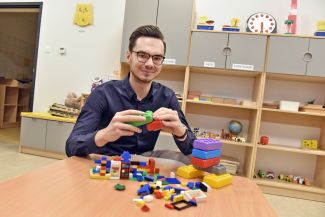Is every brand's image built in the same way?
Every brand has a different approach to image building. A lot depends on the type of organisation (public, enterprise, non-profit) and the type of brand. The image of corporate brands is created slightly differently than the brand image of a specific product. In the latter case, reference is made more often to the material and functional characteristics of the product. It also depends on the target group. The brand is a point of reference that enables the consumer to evaluate the characteristics of the product, as well as other values associated with it. The image is a set of associations based on one's own experiences with a particular brand and is formed by a combination of the personality and identity of the branded product.
What is the specificity of nostalgic brands?
In the simplest terms, a nostalgic brand refers back to a time when we were younger. It appeals to positive memories, creating a sense of security but also authenticity.
How important is advertising in the toy industry?
It is a key element because, according to the brand image concept, the product must stand out from other brands in the same category. Children are particularly receptive to advertising, which is why it is a tool so often used in the toy industry. Although the person making the purchasing decision is an adult, advertising is targeted at children, who influence their parents' decisions. Since the computer and virtual entertainment industry has entered the market, toy manufacturers face a huge challenge not to lose their target audience to virtual reality.
What do we need to be wary of as consumers and as parents?
Here we need to distinguish between a ´sales deal´ and advertising. Sales take place at the point of sale, i.e. in the shop. Here we are talking about displays such as large LEGO models enclosed in display cases. Advertising, on the other hand, is a communication tool aimed at highlighting the brand. The tone and style of the brand portrayed in advertising influences the perceived image of the brand. In both cases, parents must remember that, above all, the main target audience of the brand is the child. Advertising can use children in the buying decision process. Viewing such messages therefore influences the formation or change of children's consumer preferences.
You conducted a pilot study on the LEGO brand. What conclusions did you draw from it?
The aim of the publications so far has been to discuss how nostalgia can be used as a tool to build consumer loyalty and how this psychological construct can affect brand value. Among other things, research results have shown that previous experiences with a brand have a significant impact on the nostalgically oriented willingness to purchase products. In addition, nostalgic feelings towards the brand had a positive impact on the strength of LEGO brand value, which indeed helps to evoke fond memories of the past, this is especially noticeable in the 30-39 age range. Since part of the nostalgia strategy, using the Danish brand as an example, is the re-release of iconic sets from years past, e.g. the Millennium Falcon from the Star Wars universe, people who were not able to fulfil a childhood desire can become owners of this set right now.
What is the aim of the PhD and what does the research look like?
I am identifying and evaluating factors influencing consumer motivation in the context of nostalgic brand image management, in the toy industry. The research is original in nature. An experiment was conducted among representatives of generations X, Y and Z. It assumes a hypothetical scenario of having to buy a toy. Given a choice of 3 toys offered by specific brands, the participants in the study had to choose between of buying one of them, whether for themselves or someone close to them (son/daughter, child in the family). The choices were always: an old toy, a nostalgic toy (current but referring to an old toy) and a toy that was simply new, contemporary. After the selection of toys, participants were asked to give the first associations they had when they saw the toy brand logos. The brands were chosen by me based on data from the most profitable toy companies in 2021 (LEGO, Bandai, Hasbro, Mattel). Using one of the research meetings as an example:
- Power Rangers (BandDai) - The most popular toy was the nostalgic variant of this toy (the red ranger referring to the 'Mighty Morphin' series). It was particularly popular with the 1997+ generation. Millennials, interestingly enough, mostly opted for the contemporary variant (autumn 2022 model) from the latest series broadcast on TV. A few people, and again from the 1997+ generation, were interested in the 1990s Megazord.
- LEGO - There was a tie between the nostalgic variant (a reference to the pirate ship Barracuda) and the old Lego model (the castle from the Castle Knights' Kingdom series). Generation X chose the old variant, while Y leaned towards nostalgia. The Z's, who preferred the old set, had a completely different reaction.
- Barbie (Mattel) - No one was interested in buying the classic version of the Barbie doll ('Barbie Entrepreneur'). Minimally more often the choice was for the contemporary variant of the doll. Z's were more likely to choose the nostalgic variant (possibly triggered by the smartphone that this doll has), while Y's were more likely to choose the 'plain contemporary' variant.
Why study at IDS?
As my grandfather used to say, "as long as you feel you can do it, it's worth doing it". That's why, right after defending my master's thesis, I gave myself the chance to go that one step further, while realising that it would be a bit more difficult than before. Nevertheless, thanks to studying at IDS, I ended up with a thesis supervisor who allowed me to look at the issues I was taking on from a broader perspective, making my research even more valuable.



